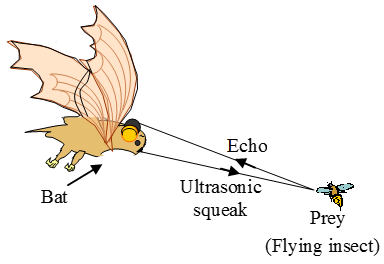Ultrasound Study Guide
INTRODUCTION
The term “ultrasound” refers to sound waves having frequencies higher than the human hearing limit. The top capacity varies per person, but it is often approximately 20,000 Hertz. Ultrasound has the same physical properties as audible sound.
ULTRASOUND DEFINITION
Ultrasound is a type of non-ionizing radiation that images the body using high-frequency sound waves. It is a real-time examination that allows for the evaluation of moving structures as well as the measurement of blood flow velocity and directionality within a vessel.
Bats, for example, detect their prey through a variety of ultrasonic range (echolocation) techniques. They have the ability to detect frequencies above 100 kHz and possibly up to 200 kHz.
USES OF ULTRASOUND
- Ultrasounds are used in a variety of applications such as navigation, medical, imaging, cleaning, and communication.
- During pregnancy, it is used to examine the uterus and ovaries and keep an eye on the developing baby’s health.
- Sonar – Submarines used this technology to navigate by passing high-frequency waves beneath the water. These sound waves may easily pass over water and are employed for undersea communication and detection.
- Echocardiography (ECG)
- Detecting Cracks in metal – Waves are commonly used to identify cracks or fissures in high-rise buildings and substantial metal components.
Apart from these, ultrasound waves are also used in many places.
PROPERTIES OF ULTRASOUND
Ultrasonic waves are sound waves with a frequency greater than 20 kHz. The human ear cannot hear these sound waves. Ultrasound waves with a very high amplitude are referred to as sonic.
Some important properties of Ultrasound:
- Ultrasonic waves have a frequency that is higher than what humans can hear (20 kilohertz).
- Their wavelengths are shorter. As a result, they have a lot of penetrating power.
- They are unable to travel in a vacuum.
- They are reflected, refracted, and absorbed.
- They contain a lot of energy. They can be transmitted across long distances with little energy loss.
- When they flow through objects, they produce a lot of heat.
APPLICATIONS OF ULTRASOUND
- It’s utilized in security systems to detect even the tiniest movement within a defined region.
- Acoustic microscopy is used in industry to analyze the uniformity and cleanliness of liquids and solids using ultrasound.
- Ultrasound waves vibrate a metal sheet in humidifiers, causing the water to spray as a fine mist.
- To weld polymers, ultrasonic welding is utilized to generate heat.
- Ultrasonic cleaning is effective for cleaning delicate jewelry, watches, and glasses.
SUMMARY
- The term “ultrasound” refers to sound waves having frequencies higher than the human hearing limit.
- The top capacity varies per person, but it is often approximately 20,000 Hertz.
- Ultrasound has the same physical properties as audible sound.
- Ultrasounds are used in a variety of applications such as navigation, medical, imaging, cleaning, and communication.
FAQs
Q. What are the three properties of ultrasound?
- Ultrasonic waves have a frequency that is higher than what humans can hear (20 kilohertz).
- Their wavelengths are shorter. As a result, they have a lot of penetrating power.
- They are unable to travel in a vacuum.
Q. How is physics used in ultrasound?
Materials with a piezoelectric property can generate ultrasound waves. The piezoelectric effect is a phenomenon that occurs when a mechanical force (squeeze or stretch) is applied to certain materials, resulting in the creation of an electric charge.
Q. Explain the uses of ultrasound.
Ultrasounds are used in a variety of applications such as navigation, medical, imaging, cleaning, and communication.
We hope you enjoyed studying this lesson and learned something cool about Ultrasound! Join our Discord community to get any questions you may have answered and to engage with other students just like you! We promise, it makes studying much more fun!😎
REFERENCE
- Properties of Ultrasonic Waves: https://byjus.com/jee/properties-of-ultrasonic-waves/** **Accessed 14th April 2022.
- Ultrasound: https://www.vedantu.com/physics/ultrasound Accessed 14th April 2022.
- Applications of Ultrasound: https://www.slideshare.net/abhijitcool18/application-of-ultrasound-in-separation-process Accessed 14th April 2022.


